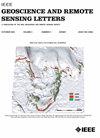线性谱混合模型引导的人工蜂群末端生成方法
IF 4
3区 地球科学
Q2 ENGINEERING, ELECTRICAL & ELECTRONIC
引用次数: 3
摘要
端元提取(end - member extraction, EE)是高光谱解混的重要步骤。然而,由于图像数据的复杂性,一些纯像素假设下的EE方法在高度混合的数据中可能效果不佳。本文提出了一种线性光谱混合模型引导的人工蜂群(LSMM-ABC)方法来解决高度混合情况下的EE问题。本研究的主要创新点在于LSMM- abc中的每只被雇佣的蜜蜂在LSMM的引导下搜索食物源位置,而不是与邻居的食物源位置。此外,本文提出的LSMM-ABC不局限于纯像素假设。LSMM可以帮助工蜂在基于ABC算法的端元生成中找到更好的解决方案。在合成和真实Cuprite数据集上的实验结果表明,LSMM-ABC方法与高度混合数据的EE方法相比,可以提高整体的EE精度。本文章由计算机程序翻译,如有差异,请以英文原文为准。
Linear Spectral Mixing Model-Guided Artificial Bee Colony Method for Endmember Generation
Endmember extraction (EE) is one important step in hyperspectral unmixing. However, some EE methods under pure-pixel assumption may work badly for highly mixed data due to the complexity of image data. In this work, we propose a linear spectral mixing model-guided artificial bee colony (LSMM-ABC) method for EE to solve the problem under a highly mixed situation. The main innovative point of this work is that each employed bee in LSMM-ABC searches food source position guided by the LSMM, rather than with a neighbor food source position. What is more, this proposed LSMM-ABC is not confined to the pure-pixel assumption. The LSMM could help employed bees to find a better solution in endmember generation based on the ABC algorithm. Experimental results on both synthetic and real Cuprite data sets show us that the proposed LSMM-ABC method can improve the overall EE accuracy compared with the EE methods for highly mixed data.
求助全文
通过发布文献求助,成功后即可免费获取论文全文。
去求助
来源期刊

IEEE Geoscience and Remote Sensing Letters
工程技术-地球化学与地球物理
CiteScore
7.60
自引率
12.50%
发文量
1113
审稿时长
3.4 months
期刊介绍:
IEEE Geoscience and Remote Sensing Letters (GRSL) is a monthly publication for short papers (maximum length 5 pages) addressing new ideas and formative concepts in remote sensing as well as important new and timely results and concepts. Papers should relate to the theory, concepts and techniques of science and engineering as applied to sensing the earth, oceans, atmosphere, and space, and the processing, interpretation, and dissemination of this information. The technical content of papers must be both new and significant. Experimental data must be complete and include sufficient description of experimental apparatus, methods, and relevant experimental conditions. GRSL encourages the incorporation of "extended objects" or "multimedia" such as animations to enhance the shorter papers.
 求助内容:
求助内容: 应助结果提醒方式:
应助结果提醒方式:


